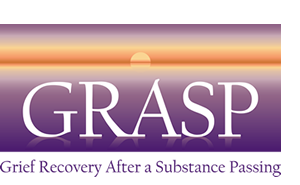Meditation & Relaxation Techniques
Icon made by Freepik from www.flaticon.com is licensed by CC 3.0 BY
Throughout the grieving process we quite often hear: “You must relax.” “You need rest.” “Your mind needs rest.” “Quiet yourself.”
Easier said than done when the mind is rerunning events and conversations like rewinding a video or it’s “squirreling” around with details and questions and decisions to be made.
Some find it extremely difficult, almost impossible, to relax or sleep – especially in the first weeks of bereavement. This is why we decided that we would give practical ways to achieve one or the other or both states of relaxation and meditation in this part of our site.
Meditation
Meditation is not some mysterious or “New Age” ritual, but a very ancient practice that enables the inner quietness and peaceful solitude of mind to be reached. The total suspension of mind for five, ten, fifteen minutes or longer, according to preference, can renew and refresh both physically and mentally. Meditation is something which can be done anywhere, anytime for a moment of peace and calm. It can be done in the office, on a bus or train, sitting on a park bench, at home in the morning, or last thing at night, however needed and practiced uninterrupted. SETTING Suggestions:
- Switch off telephones.
- Subdue lighting.
- Softly play music or gentle nature sounds.
- Silence
- Perfumed candles. Some find this contributes to the ambiance of peace.
READY to BEGIN:
- Sit or lie comfortably.
- Take a deep breath through the nose while slowly counting silently to five, hold for a count of one, release through partially open mouth.
- Continue to breath slowly, gently, filling the lungs to capacity in this way before releasing.
- Close eyes if desired or concentrate on an object before you.
- Continue breathing quietly while from the top of the head imagine any tension being released and flowing down and out through the neck and dropping off the shoulders.
- With the next breath, the throat relaxes as the thought-flow takes tension away from that area and the chest. Feel the arms and hands ease and be limp. Stomach releases.
- Hips and lower back respond to the tension continuing to leave the body with each exhalation of breath.
- Legs and feet “sink” earthward.
- Let all thought drift away and enjoy the total relaxation of mind and body with the next breaths.
- Breathe in the Silence and Peace of the moment.
VISUALIZATION:
It is at this contented and restful stage that some visualize or see within the mind’s eye a place of sanctuary to which the mind seeks to visit at each meditation.
- This place may be a room…
- A garden…
- A beach…
- Or mountains…
- A beautiful place actually visited or one imagined.
In this solitude and peaceful enjoyment some discover the answer to a perplexing question or simply immerse the self into those stress free moments.
RETURNING:
When ready to emerge from a meditation, do so slowly.
- The heart-rate will have slowed through experiencing the calmness.
- As awareness of actual surroundings occur, gently stir the body and limbs.
- Take a final cleansing breath, and feel refreshed .
- There are helpful books and interesting guided meditations on audio tapes which can be borrowed from public libraries as well as purchased from any bookstore.
Relaxation
SETTING:
- Switch off telephones.
- If daytime, subdue lighting by drawing curtains or pulling down shades, etc…
- Remove shoes and any binding articles of clothing such as belts.
- Lie down on a bed or sofa with the head, neck and shoulders supported by a pillow. (After a time you’ll be able to just use the floor.)
- For further comfort, some people like to have a small cushion or pillow under the knees.
READY to BEGIN:
- For five slow counts take a deep breath, hold for one count, then completely expel for five counts.
- Make an exaggerated yawn. Let the mouth drop gently open and “wiggle” the jaw from side to side. This begins to loosen the tension here.
- Now squint the eyes tightly: Let go. Lids gently close.
- Exaggerate another yawn. Keep jaw loose.
- Tense/scrunch shoulders: Let go.
Now we are ready to tense muscles and “let go” throughout the body. With each tension take a deep breath to five counts, hold for one count, and as you empty the lungs to five counts, the muscles you are concentrating on will begin to relax. You can begin with the feet or head, whichever is preferred, but repeat the above process with the:
- Shoulders
- Hands
- Stomach
- Thighs
- Calves
By the time you have slowly gone from head to toe or vice-versa, you will have noticed some tension being released. Eventually, you’ll find that you no longer need to count to yourself, but will simply tense and unwind slowly and naturally the more you practice. Think of your head, neck and shoulders as sinking into the pillow, your limbs and body drifting down through the bed/sofa/floor. Breathe deeply, steadily, slowly through your nose. Exhale completely through relaxed lips. Try this at night as you prepare to sleep, or, perhaps for 10-15 minutes during the day.
The more you do this, the more skilled you become in allowing the tension to leave your body where it may have been contributing to your physical discomfort. ONE MORE WORD: If it is at all possible, head, neck and shoulder massage will absolutely aid immensely. In a stressful situation, this is not an indulgent luxury but a nurturing healing. NOW —— float away on your own special cloud.


